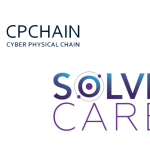The digital revolution in healthcare is at a turning point — hospitals need their systems to talk to each other to make new and existing technologies more meaningful to patient care and to better manage the health of their patient populations.
Success in healthcare today requires an understanding of patients’ exact needs and the ability to manage their care across the entire healthcare ecosystem. To do this, healthcare organizations need to become interoperable. During a March 26 webinar hosted by Becker’s Hospital Review and sponsored by Allscripts, Mike McAfee, AVP of Solution Management at Allscripts, described what interoperability really means, and why healthcare organizations need to strip the concept down to the basics to define it by the needs of their patient populations.
While there are varying definitions of interoperability, most industry insiders and analysts refer to it as the access to external information within the workflow. Interoperability has also become associated with numerous terms that help support the concept, such as meaningful use, application programming interfaces and fast healthcare interoperability resources, or FHIR. However, Mr. McAfee advised health systems not to get too fixated on the “acronym soup,” these terms convey. Instead, organizations should determine what level of interoperability is mission critical for their own systems.
“A lot of folks are trying to do more with less because of the IT spends over the last number of years — meaningful use requirements, updating of hardware and folks moving to the cloud — and really the drive to trying to explore new ideas for many organizations is very limited,” Mr. McAfee said. “Folks have to have a targeted approach to be able to solve for their requirements, their needs now, and have a pathway for the future down the line.”
Want to publish your own articles on DistilINFO Publications?
Send us an email, we will get in touch with you.
A vital aspect of understanding a patient is having access to their health records, which is why healthcare organizations must pursue interoperable systems. But access is not necessarily enough; health systems should also include functions like search to make finding relevant patient data more efficient. Additionally, access to information such as the clinical note’s original author and the date or time the patient record was captured unlocks potential for more accurate reporting and a better understanding of which provider performed what type of service or procedure for the patient.
“This data capture helps with the building blocks of the jobs to be done within population health, which are to be able to manage and identify these cohorts of patients and ensure that what needed to happen, did happen,” Mr. McAfee said.
When determining what level of interoperability a healthcare organization should pursue in the immediate future, it is important to take patient population into account. Sometimes patients will leave the region where their primary health system is located, forcing them to seek care elsewhere. This is often referred to as creating a “donut hole of data,” Mr. McAfee said. He described an elderly patient population in western Pennsylvania, where many individuals relocate to warmer areas like Florida in the winter.
“During that time, it creates a ‘donut hole’ of data for the healthcare systems here [in western Pennsylvania] because these patients go down and access care, whether it’s in Orlando, Sarasota [Fla.], Tampa [Fla.] or where have you, and their information is locked in those EMRs,” Mr. McAfee said. “And without systems like CommonWell Health Alliance and Carequality to provide an access point, it becomes very difficult to collect those patients’ information.”
To eliminate the donut hole, healthcare organizations should focus on establishing both national and regional care networks. This level of integration requires semantic interoperability, which focuses on using the same reference terminologies to communicate across systems. Semantic interoperability can help healthcare organizations work more efficiently with other health systems.
The ultimate goal of interoperability is to traverse patient records and notifications with other organizations on a single, accessible platform that can integrate with every area of the healthcare ecosystem, including the community environment, care planning and consumer engagement, Mr. McAfee said.
This enables healthcare organizations to provide a more personalized care experience, rather than starting from square one for every patient encounter, and better manage population health over time. Using personalized medicine “allows [healthcare organizations] to deliver a clinically sound ecosystem, have the entire patient managed with data coming in from all the various different systems … and being able to adapt to the changes in the patient, program and data over time, so that you don’t have to switch out entire IT infrastructure,” Mr. McAfee said.
Date: April 05, 2019
Source: Beckers Health IT & CIO Report








